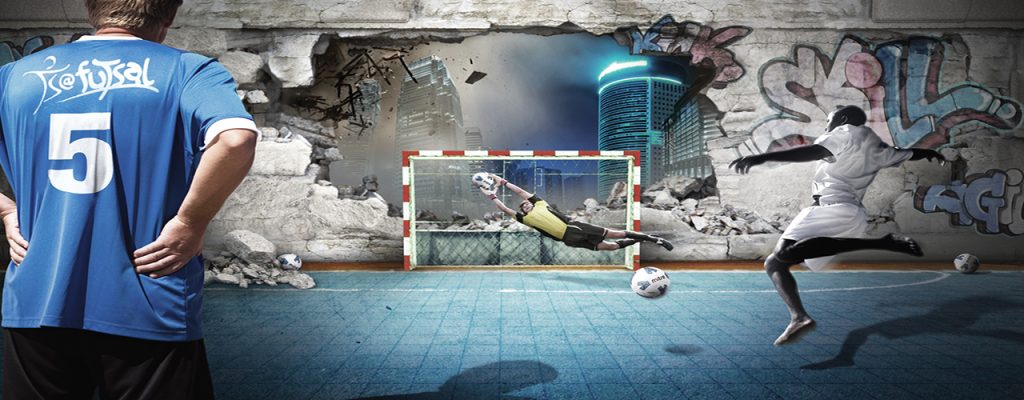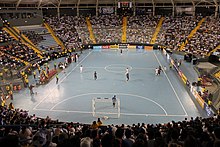Revealing Futsal Team Strategy: The Key to Victory
Effective Tactical Formations: Choosing the Right System for Your Team
In the competitive world of Futsal, the success of a team is determined not only by individual skills, but also by the tactical strategies used. One of the most important aspects of tactical strategy is choosing the right formation. The formation chosen can influence the course of the game, influence field control, as well as optimize goal-scoring opportunities and minimize the risk of conceding.
Choosing a formation that suits your team’s characteristics and strengths is an important step in preparation for each match. Each formation has its own strengths and weaknesses, and requires a good understanding of the role of each player in the team.
Some effective tactical formations frequently used in futsal, as well as factors to consider when choosing a suitable formation for your team. By properly understanding these formations and how they affect the game, you will be able to improve your team’s strategic abilities and increase your chances of winning each match.
In the world of futsal, the success of a team is often determined by the tactical formation chosen. The right formation can provide a significant tactical advantage, allowing a team to control the game and achieve victory. However, with the variety of formation options available, how do you choose the system that best suits your team? Let’s explore some effective tactical formations and the factors to consider in selecting them.
- 4-0 Formation (4-0-1): Position Control and Ball Possession
The 4-0 formation, also known as 4-0-1, is one of the most common formations in futsal. In this formation, four players are in the back row, while one player acts as the pivot or main target for passes. This formation provides excellence in positional control and ball possession, with the ability to maintain stability at the back and build attacks calmly.
- 3-1 Formation (3-1-1): Flexibility and Attack Creativity
The 3-1 formation, involving three players in the back row, one pivot and one attacking midfielder, offers greater flexibility in attack. With one midfielder who has a creative role in organizing attacks, this formation allows the team to create goal opportunities with a variety of passes and intelligent movements.
- 2-2 Formation (2-2-0): Balance Between Attack and Defense
The 2-2 formation, with two defenders and two attackers, offers a good balance between attack and defense. In this formation, the two central players have an important role in controlling the game on both sides of the pitch, while the two players in the back row are responsible for keeping the defense solid.
- Formation 1-2 (1-2-1): High Pressure and Fast Attack
The 1-2 formation, involving one defender, two midfielders and one pivot, is often used to pressure opponents in the middle of the field. With one defender coordinating high pressing and two midfielders playing a role in fast attacks, this formation can create deadly goal opportunities.
- Important Factors in Choosing a Formation
In choosing the appropriate tactical formation for your team, there are several factors to consider:
Player Skills: Choose a formation that suits the strengths and individual playing styles of the players on your team.
Opponent Strategy: Consider formations that can exploit weaknesses and respond effectively to your opponent’s strategy.
Team Goal: Determine whether your team focuses more on solid defense, fast attack, or position control.
Physical Condition: Pay attention to the physical condition of the players and their ability to execute formations that may require different work intensities.
By paying attention to all these factors, you can choose the right tactical formation to lead your team to victory in their next futsal match. The right formation is not a guarantee of victory, but it can be a powerful tool to achieve your goals in this dynamic and fast-paced game.
The Important Role of Pivot Players in Offensive and Defensive Tactics

In the game of futsal, one of the roles that is often the key to a team’s success is the role of the pivot player. A pivot player is a player who plays a central role in the team’s attack line, often being the focal point in building attacks and scoring goals. However, the role of pivots is not only limited to the attack aspect, they also play an important role in maintaining the stability of the team’s defense.
Pivot players have the ability to receive short and long passes from their teammates, as well as utilize their physical advantages to face opposing players and create opportunities for their team. With good physical strength and technical skills, a pivot can be a real threat to the opponent’s defense.
However, the role of the pivot is not only related to attack. They also have a responsibility to help keep the team’s defense solid. With his central position on the field, a pivot can help organize the defense and apply pressure on opposing players who are trying to build an attack.
More about the important role of pivot players in attack and defense tactics in futsal. By understanding this role well, you will be able to improve your team’s strategy and exploit the maximum potential of the pivot player in achieving victory.
Pressing and Space Control: Controlling the Game with Precise Pressure
One of the key strategies that can change the direction of the game is pressing or pressure exerted by the team. Pressing is a tactic where the team tries to press the opponent aggressively, both when the opponent is in a defensive position and when trying to build an attack.
Correctly applied pressure can force your opponent to make mistakes, reduce their space, and disrupt your opponent’s flow of play. However, it is important to remember that effective pressing requires good coordination between players, as well as a deep understanding of when and where pressure should be applied.
In addition, space control is also a key factor in controlling the game. Players must be able to read the field situation well, identify key areas that need to be controlled, and move intelligently to control that space. By controlling space, the team can limit the opponent’s movement, reduce their chances, and take over the initiative in the game.
The importance of pressing and space control in futsal. We will review strategies that can be used to apply effective pressure to opponents, as well as how to control space optimally to control the course of the game. By understanding these concepts, you will be able to improve your team’s strategic capabilities and achieve the desired results in every game.
Solid Defensive Deal: Secure the Goal and Stop the Opponent’s Attack
In the world of futsal, a team that has a strong defense is often the key to success. A solid defensive deal not only involves the individual qualities of the defenders, but also requires good coordination between them to deal effectively with the opponent’s attacks.
One of the main objectives of a defensive agreement is to secure the goal, namely by preventing opposing players from creating dangerous goal opportunities. This involves proper placement of defenders, the ability to read the opponent’s movements, and effective communication between them.
Apart from securing the goal, a solid defensive arrangement also involves the ability to stop the opponent’s attack early on, before it even reaches the team’s own half. This involves applying precise pressure in critical zones of the pitch, cutting off the opponent’s passing lanes, as well as disrupting their flow of play.
To achieve a solid defensive agreement, every player on the team must understand their roles and responsibilities well. They must be ready to support each other, fill empty spaces, and react quickly to opponent moves.
The importance of a solid defensive agreement in futsal. We will review strategies that can be used to secure the goal and stop opponent attacks effectively, as well as how to build good coordination between defenders. By understanding these concepts, your team will become more difficult to penetrate and have more opportunities to achieve victory.
Final Finishing Strategy: Increasing the Chance to Goal Conversion Rate
In futsal, a team’s success is often determined by their ability to convert opportunities into goals. Therefore, the final settlement strategy is one of the most important aspects in this game. While creating opportunities can be exciting, it is only half the battle; The ability to turn opportunities into goals is the true key to achieving victory.
The final finishing strategy involves various skills and decisions that must be made by players on the field. This includes choosing the right technique for a given situation, having quick decision-making skills, and maintaining composure in front of the opponent’s goal. Additionally, understanding your teammates’ positions and movements is also an important part of this strategy.
The conversion rate of opportunities into goals can be increased through consistent and targeted practice. These drills should be designed to simulate real game situations and give players the opportunity to practice their finishing techniques under conditions similar to real matches.
Apart from technical training, it is also important to develop a tactical understanding of how to create good opportunities and exploit them effectively. This involves reading the game intelligently, collaborating with teammates, and recognizing crucial moments in the match where opportunities must be exploited.
Techniques that can be used to increase the conversion rate of chances into goals, as well as how to train players to be more effective in completing their chances on the pitch. By understanding and implementing these strategies, your team will become more deadly in front of the opponent’s goal and have more opportunities to achieve victory.
The Key to Winning Futsal Team Strategy
In the course of this article, we have explored various key strategies that can help guide a futsal team to victory. From choosing the right formation to increasing the conversion rate of chances into goals, every strategic aspect plays an important role in determining the outcome of each match.
The tactical formation chosen affects the overall dynamics of the game. Choosing a formation that suits your team’s strengths and playing style can give you a significant advantage on the field. However, the success of a team is not only determined by formation alone; Solid defensive dealing, effective pressing and a mature finishing strategy also played a key role in achieving victory.
It is important to remember that no strategy can guarantee victory in every game. Each team has its own strengths and weaknesses, and factors such as physical condition, mentality and luck can also influence the final result. However, by understanding and implementing these strategies well, your team will have more opportunities to achieve victory on the field.
Valuable insight into key strategies in futsal, and help you develop a better understanding of how to achieve victory in this dynamic, fast-paced sport. Keep practicing, keep learning, and keep working together as a team. Victory is in your hands, and with determination and hard work, you can achieve it.




